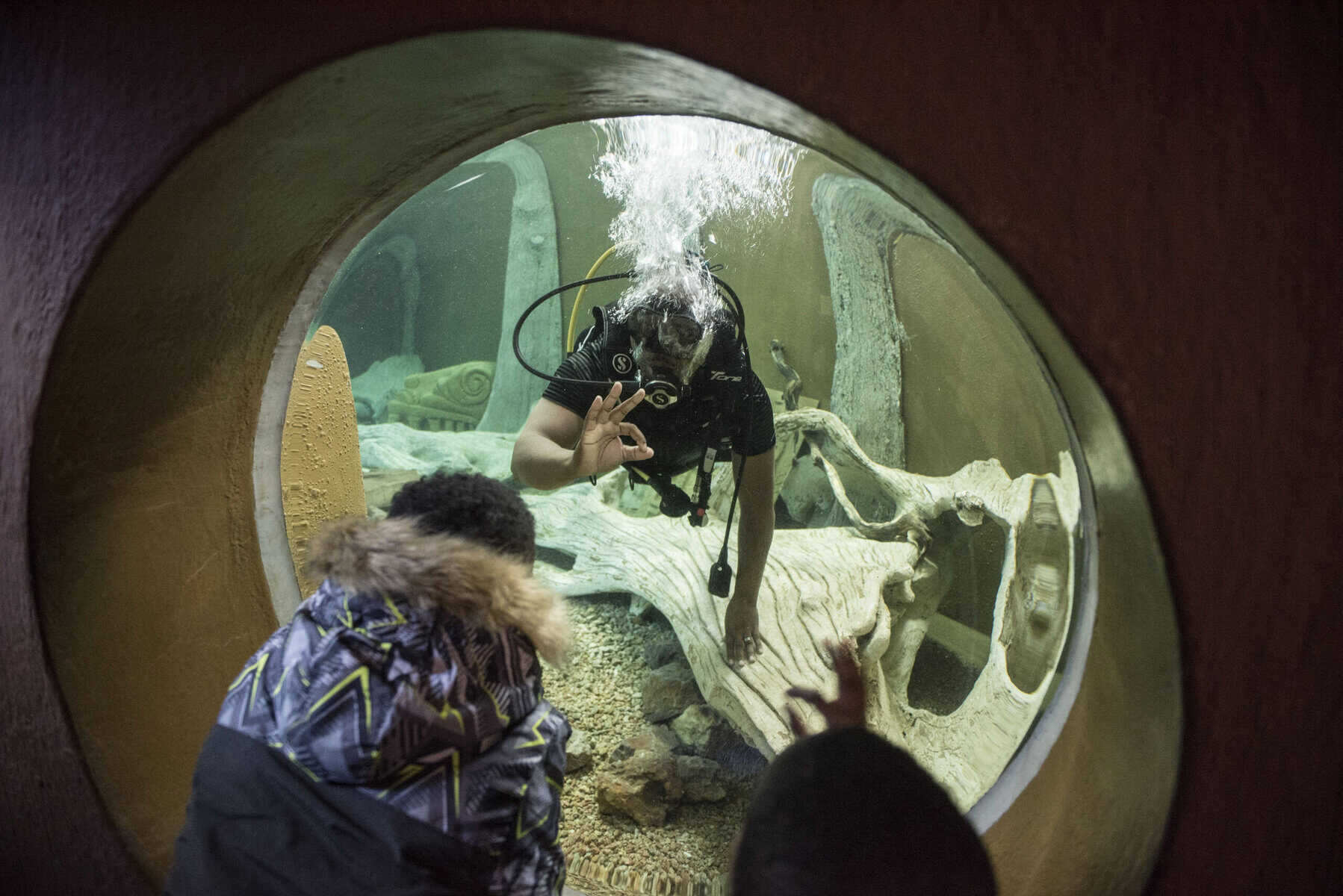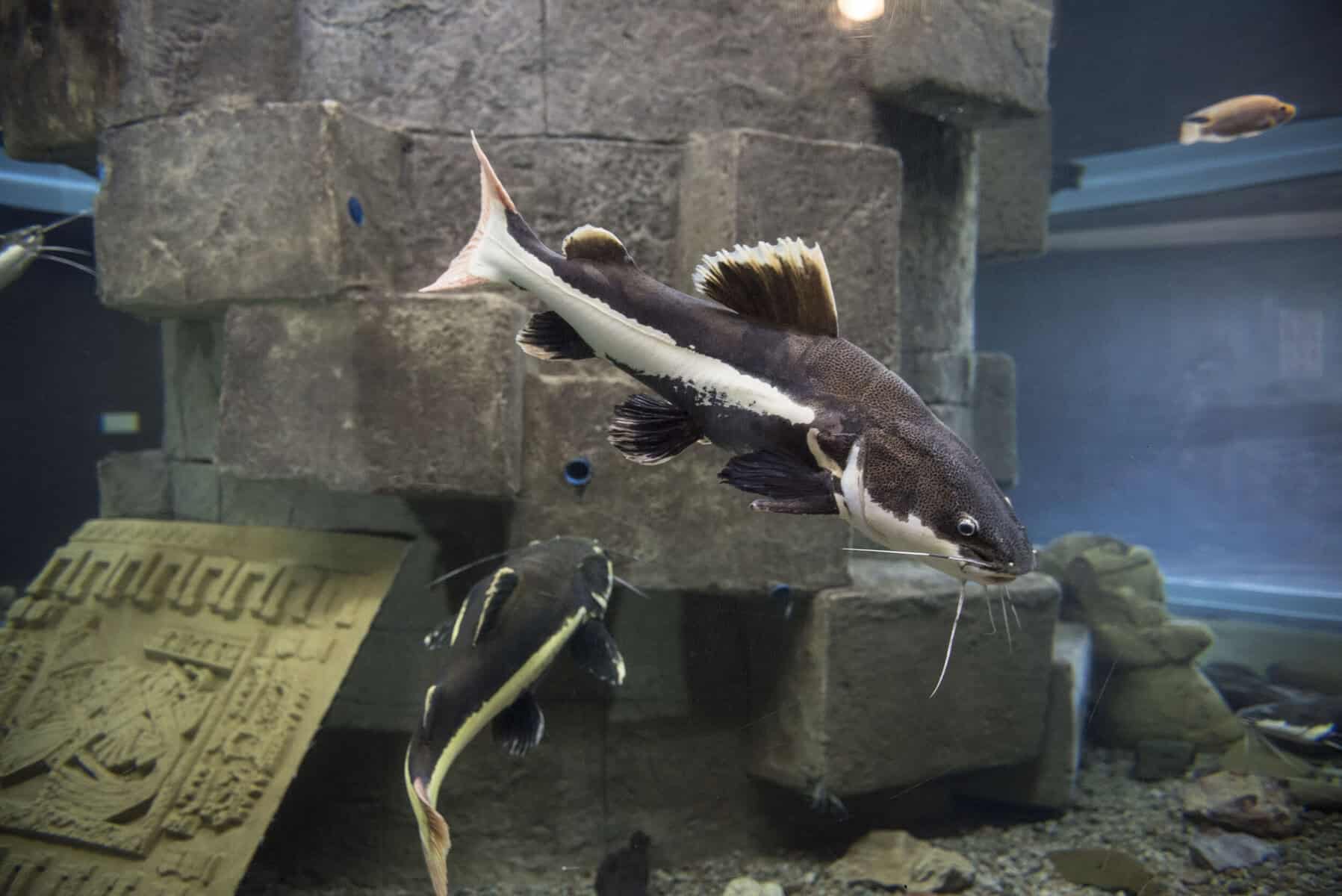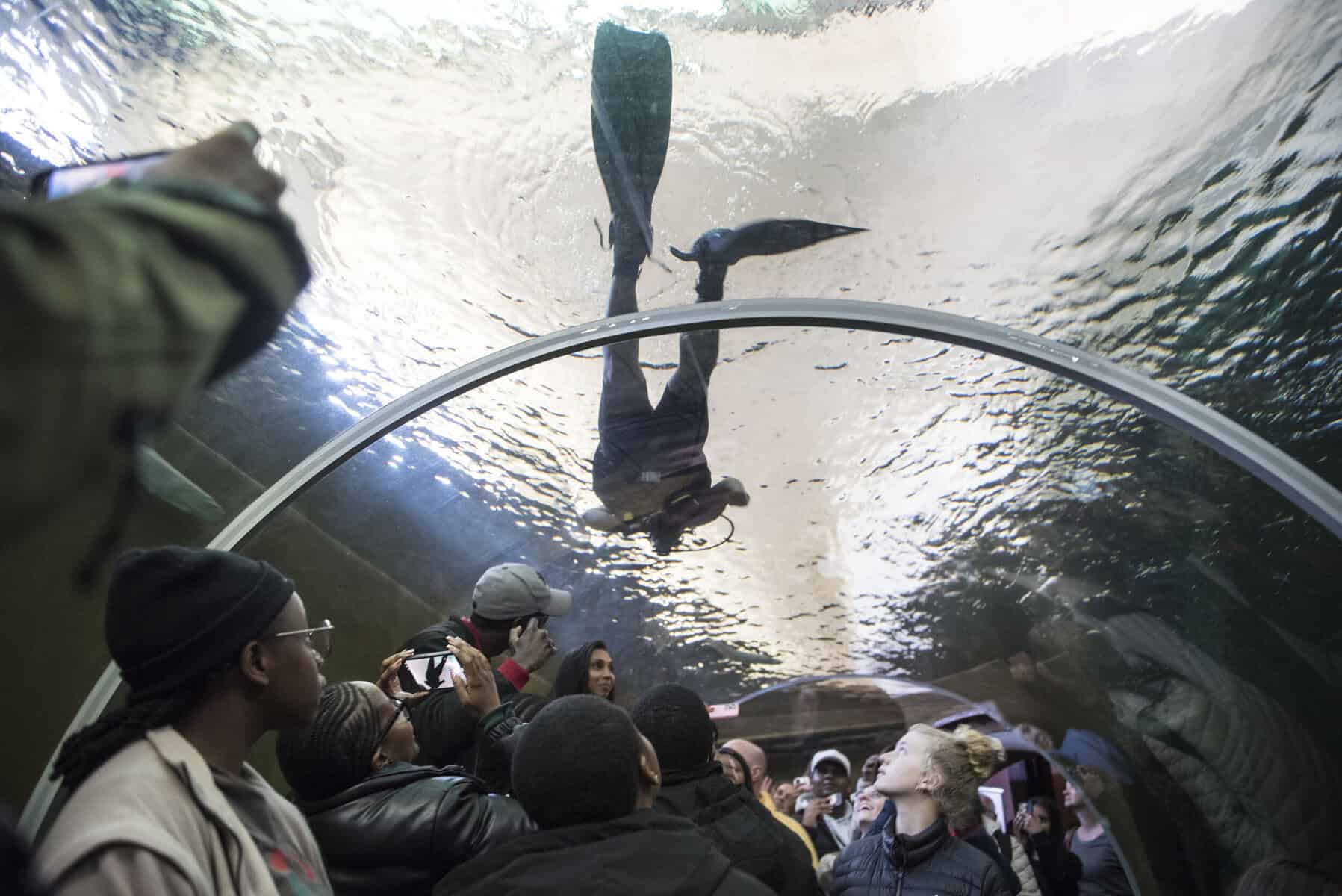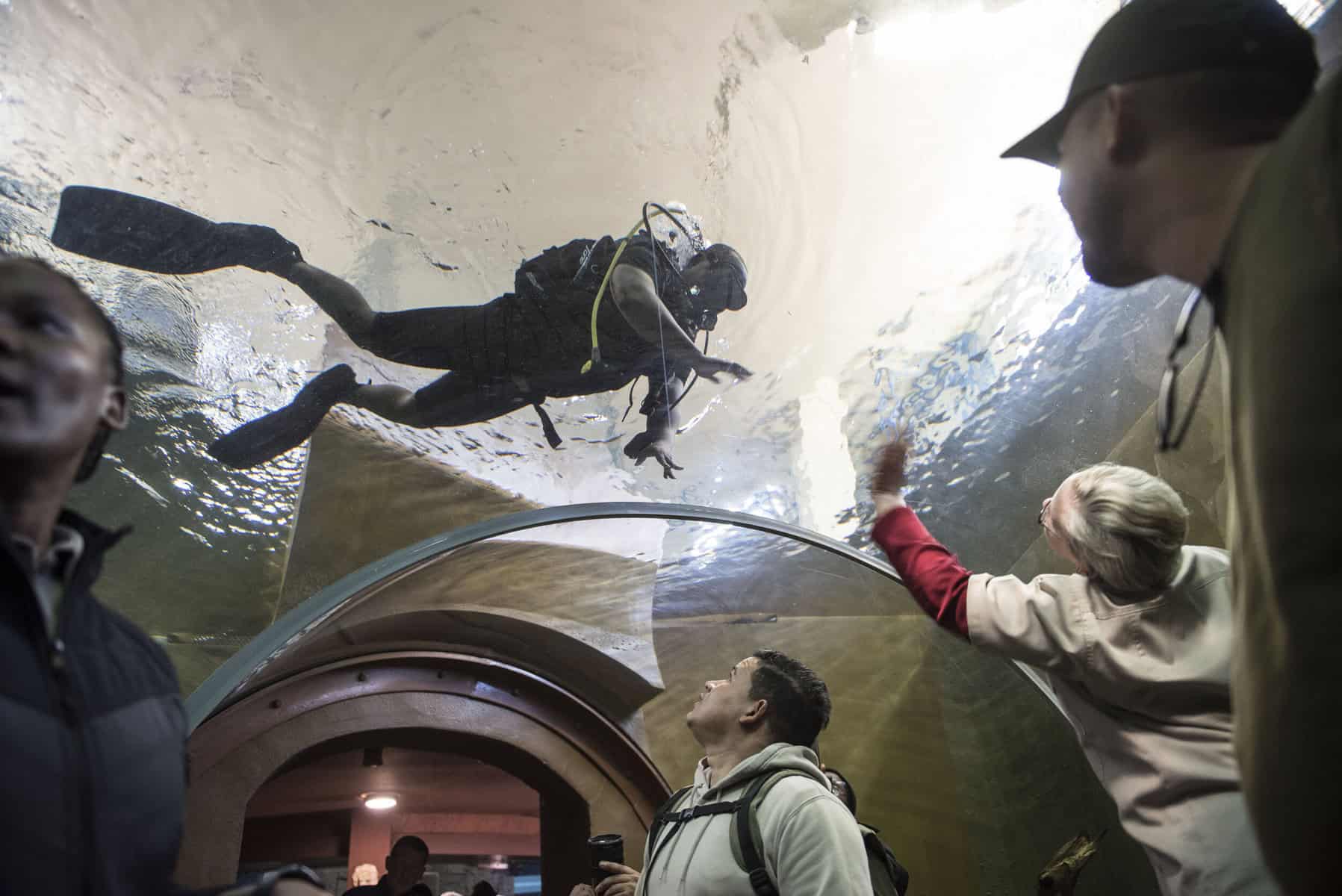The Aquatic and Amazonia sections at Joburg Zoo showcase motoro stingrays, catfish, axolotls, eels, and many other fascinating species.

The Johannesburg Zoo’s special “Breakfast with the Zoo Aquarist” programme offered visitors an extraordinary behind-the-scenes glimpse into the aquatic world on Saturday.
Guests joined the zoo’s aquarist team for an educational morning that combined a delicious breakfast with fascinating insights into marine biology, zoology and diving careers.
The event showcased the zoo’s impressive aquatic collection, featuring motoro stingrays, catfish, axolotls, and eels in the Aquatic and Amazonia sections.
With the zoo celebrating its 121st birthday and offering R21 entry on the 21st of every month until February 2026, there’s never been a better time to explore this aquatic wonderland.
A morning of discovery at Joburg Zoo
The breakfast programme began with presentations about careers in aquarism, zoology and diving.
After the promised delicious breakfast, visitors embarked on guided tours of the zoo’s aquatic facilities.
The experience provided rare access to areas typically reserved for staff, offering unprecedented views of the diverse aquatic life housed at the facility.
Guests encountered a variety of species during their tour, from the graceful motoro stingrays to the mysterious eels.
Each creature represents hours of dedicated care from the zoo’s professional aquarist team.
The tour highlighted both the beauty of these animals and the complex work required to maintain their habitats.

Meet the expert aquarist
Ayrelia Randera, curator of the Aquarium at Johannesburg Zoo, shared her expertise with visitors.
With 11 years of experience as an aquarist and 15 years of education in marine biology, Randera brings exceptional knowledge to her role.
Her journey began in childhood.
ALSO READ: Franschhoek – jewel of Cape
“I was always interested in fish, especially the beach. I used to go fishing with my dad from the time I was like three years old,” she recalls.
This early fascination evolved into a serious study.
“So I was just always interested in what was in the fish. I used to do the dissecting, and just like from there, super interested in the water, surfing and then into diving.”
Behind the scenes: Daily aquarist life
Visitors learned about the comprehensive daily responsibilities of aquarium professionals.
Randera outlined the varied tasks: “A typical day of an aquarist is monitoring fish behaviour, feeding, cleaning, doing enrichment, which means we put play toys in for them, changing up the environment, doing water testing.”
The technical aspects prove equally demanding.
“We also have a lot of mechanical filtration and huge filters and motors that we have to maintain daily,” she explained.
This mechanical expertise forms a crucial component of ensuring optimal conditions for aquatic residents.

Personal connections with aquatic life
One of the most fascinating revelations involved the personal relationships formed between staff and animals.
Randera described this unexpected aspect: “Having personal relationships with each animal, so each of our fish has such distinct personalities.”
She elaborated on these unique bonds: “Feeding the stingrays and going in and feeding the piranhas. Yeah, it’s just interacting with like a whole lot of different fish, and they each, every single one of them, are different. Some of them like me, some of them like Pira. It just depends.”
Among her memorable favourites were two alligator gars named Andrew and Astro, although both have since passed away due to old age.
Currently, she holds special affection for the stingrays.
“I think right now the stingrays are my favourite, they’re just little puppies,” she said fondly.
Conservation success stories
The zoo’s aquatic programme extends far beyond exhibition to meaningful conservation work.
Randera takes particular pride in its breeding programmes for endangered species.
“The fact that we can take part in conservation and research within the aquarium and the zoo. We can do breeding of species that are potentially endangered,” she explains.
Their most notable success involves critically endangered frogs.
ALSO READ: Ford powers leopard conservation efforts
“We’ve actually done that with frogs where we’ve taken critically endangered frogs from cases, brought them back, bred them, released them to the point where they’re now near threatened, they’re not critically endangered anymore,” Randera noted.
“So we get to be a part of all these little projects with the preservation of the natural environment.”
This conservation work demonstrates how zoo visits directly support global wildlife preservation efforts.
The emotional side of being an aquarist
The rewarding conservation work comes with emotional challenges.
The deep relationships formed with animals often lead to inevitable heartbreak due to their shorter lifespans.
ALSO READ: Unleash your inner oyster in Knysna
“The most challenging is again the emotional relationships you get with these animals. They don’t have long lifespans, so it has to end at some point, and you feel it emotionally,” Randera admitted.
To preserve memories of beloved animals, the team maintains photographic records.
These serve as both professional documentation and personal mementoes of creatures that touched their lives.
Meticulous animal welfare standards
Visitors learned about the comprehensive care each animal receives.
Randera outlined their meticulous approach: “We make sure that every single aspect of the environment is 100%. With water quality, we ensure the pH is precisely suited for the specific species of fish. We make sure the furniture we put in, the play toys, all enhance their well-being and their welfare.”
The team’s dedication extends to constant behavioural observation.
“Sometimes you just think we’re just standing there and sitting and just looking. But we’re actually looking, is that fish happy today? Is he doing his normal behaviours in the wild and in the silica area?” she explains.

Every aspect receives attention, from specialised diets to social dynamics.
“We focus on every single aspect of water quality, temperature, and nutrition. We have crazy diets for every single species that we follow,” Randera says.
They carefully manage social structures within tanks to prevent excessive dominance or aggression.
Working safely with dangerous species
The tour highlighted work with potentially dangerous species such as motoro stingrays.
“They’re a freshwater version of the marine stingrays. They have venomous spines that they can inject into you, so it makes them quite dangerous,” Randera explains.
ALSO READ: Foray into the wild: Pilanesberg caters for family
However, through patient relationship-building, these animals become trusted companions.
“But we actually train them to eat out of our hands, to engage with us, so they’re not aggressive to us at all. We build a relationship with the stingrays to prevent aggression. We’re feeding them with hook sticks. They’re coming to us for rubs and to play with us.”
Continuous learning and global collaboration
The aquarist team maintains connections with research institutions worldwide.
“We are all associated with different journal houses like Research Gate and things like that. So as soon as new information comes to light, we’re sharing it,” Randera noted.
This collaboration leads to practical improvements.
Regular exchanges with other facilities facilitate knowledge sharing.
“We also do keep exchanges, we revisit other aquariums, and we share information with each other and other keepers, so that’s probably also just sharing information from people around the world.”
Education as a conservation mission
Events like the breakfast programme serve broader conservation purposes through public education.
“I think it’s more breeding programmes and also research and education. So, having events like this, we put out information about what’s under the ocean, what’s in our river systems,” Randera explained.
ALSO READ: A slice of bush heaven that delivers more than just wildlife
This educational mission carries environmental urgency.
“And that way we give people inspiration not to pollute, to take care of our waters because if life in our water ecosystem disappears, the whole earth is going to disappear. It’s one of the most unique places that we need to protect.”
Career guidance for future aquarists and technology’s expanding role
For aspiring marine biologists, Randera emphasised genuine passion as essential.
“I would say you have to have a passion for it. You have to be interested in marine life and the future, and not just do it for fun. There is a responsibility to doing this.”
The field continues to evolve with technological advancements.
Artificial intelligence now offers new monitoring capabilities.
“With regards to the monitoring example, you can get AI agents to monitor water quality and give you messages throughout the night. This has changed, this is going on,” Randera observed.
“So yeah, think integrating AI into aquarium zoos is very interesting. It should be looked at more.”
Your aquatic adventure awaits
The Johannesburg Zoo opens daily from 8:30am to 5:30pm, welcoming visitors to explore diverse collections including birds, carnivores, reptiles, and primates alongside the impressive aquatic sections.
Plan to spend a full day experiencing everything the facility has to offer.
The zoo’s 121st birthday celebration continues with special pricing.
As they confirmed on their Facebook page: “There’s no monkey business about our 121st birthday celebrations. We are so serious about celebrating our birthday that we have an offer so bananas, you would have to do a double-take to make sure you are seeing right. R21 entry fee every 21st. That’s right, entry to the Zoo is R21 on the 21st of every month till 28 February 2026.”

The Aquatic and Amazonia sections showcase motoro stingrays, catfish, axolotls, eels, and many other fascinating species.
Each visit supports conservation efforts while providing unforgettable encounters with aquatic life.
And if you are a bookworm, perhaps the trip to the zoo will be more to your liking.
The zookeepers let us in on a little bargain piece: the zoo offers an ina ethe (give and take) special on books, where you can donate books or buy books for as little as R10.
READ NEXT: Enter the world of dinosaurs






